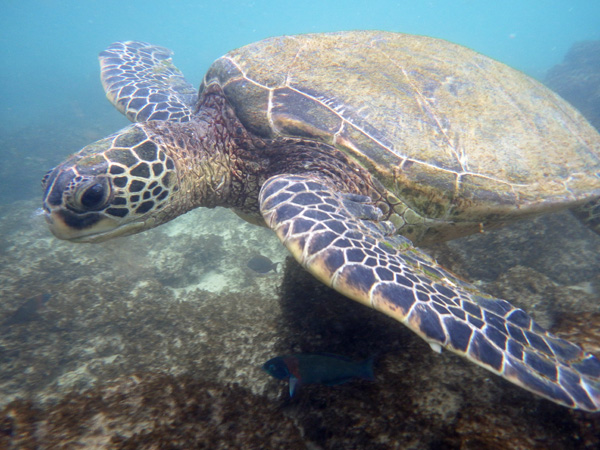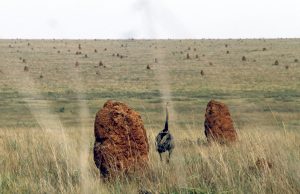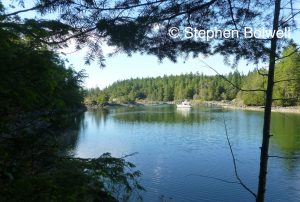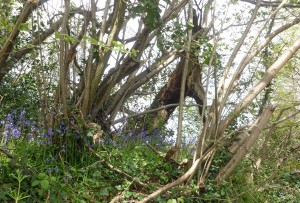As a child I was fascinated by a sea turtle’s shell that stood in the fireplace of my grandparents house during the summer months of the year to hide a coal-dusted grate. I was small back then, and it seemed so big.
Then, when I went to school I learned more: sea turtles were often eaten by people in tropical coastal regions, and their subsistence lifestyles could be improved by selling turtle shells to travellers as tangible reminders of visits to exotic places.
My grandfather had been at sea for much of his life, which explained how one turtle carapace found its way to the then seafaring town of Southampton, England. No doubt many other shells made similar journeys, until a realisation dawned that sea turtles were suffering overexploitation and the importation of turtle products was made illegal.
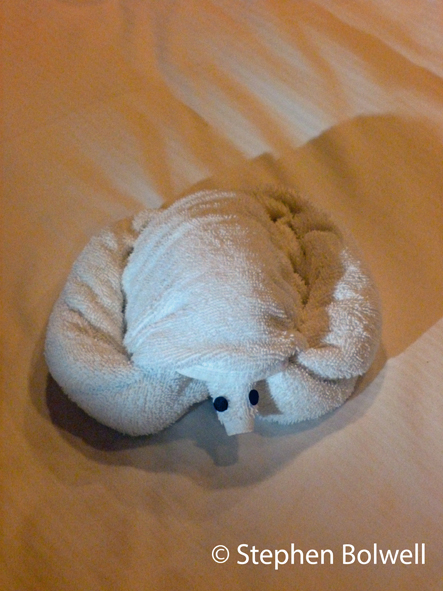
By the time I was a teenager all sea turtles were in decline and the old shell in the grate was now something of an eye opener: if creatures that swam in the remoteness of the oceans faced possible extinction, then many other plants and animals more accessible to humans must surely suffer the same fate.
This turned out to be true, but sea turtles are especially vulnerable due to an evolutionary past that ties them to the land – if only for brief periods. This land based connection goes back a couple of hundred million years – then, around 120 million years ago they experienced a rapid evolutionary change that led to a lifestyle that confined them almost entirely to the sea.
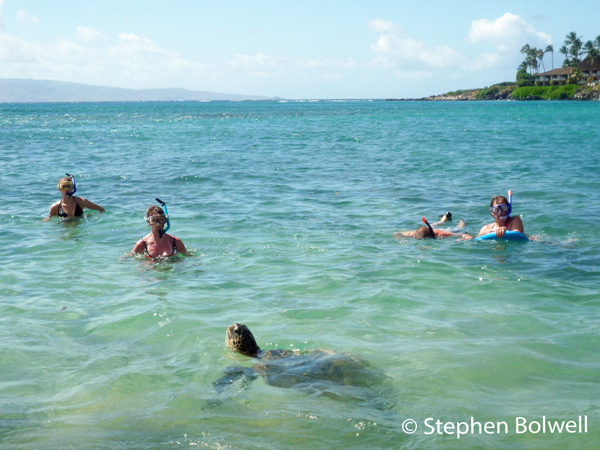
Some sea turtle species occasionally haul out onto rocks to rest or sun bathe, but mostly they live beneath the waves. All however must come regularly to the surface to breathe, and females have a tie to the land that has never been broken – mature individuals must emerge onto sandy beaches to lay their eggs; this can occur several times during the nesting season, although once egg laying is completed a female might not return for two or three years.
Usually females arrive at night, and their egg laying habits are often predictable, which makes adult females and their eggs vulnerable to over-harvesting by humans. This land based contact has become a disaster for sea turtles, an unfortunate situation for creatures that have successfully negotiated the world’s oceans without much change in structure or lifestyle for millions of years.
In recent times sea turtles have been disappearing at an alarming rate. All of the seven species that inhabit the world’s oceans are declining in numbers, although in some places legal protection and concerted conservation efforts have slowed the process. Nevertheless, it is difficult to protect animals that range so widely, and care under one jurisdiction may not be as diligent or forthcoming as it is under another.
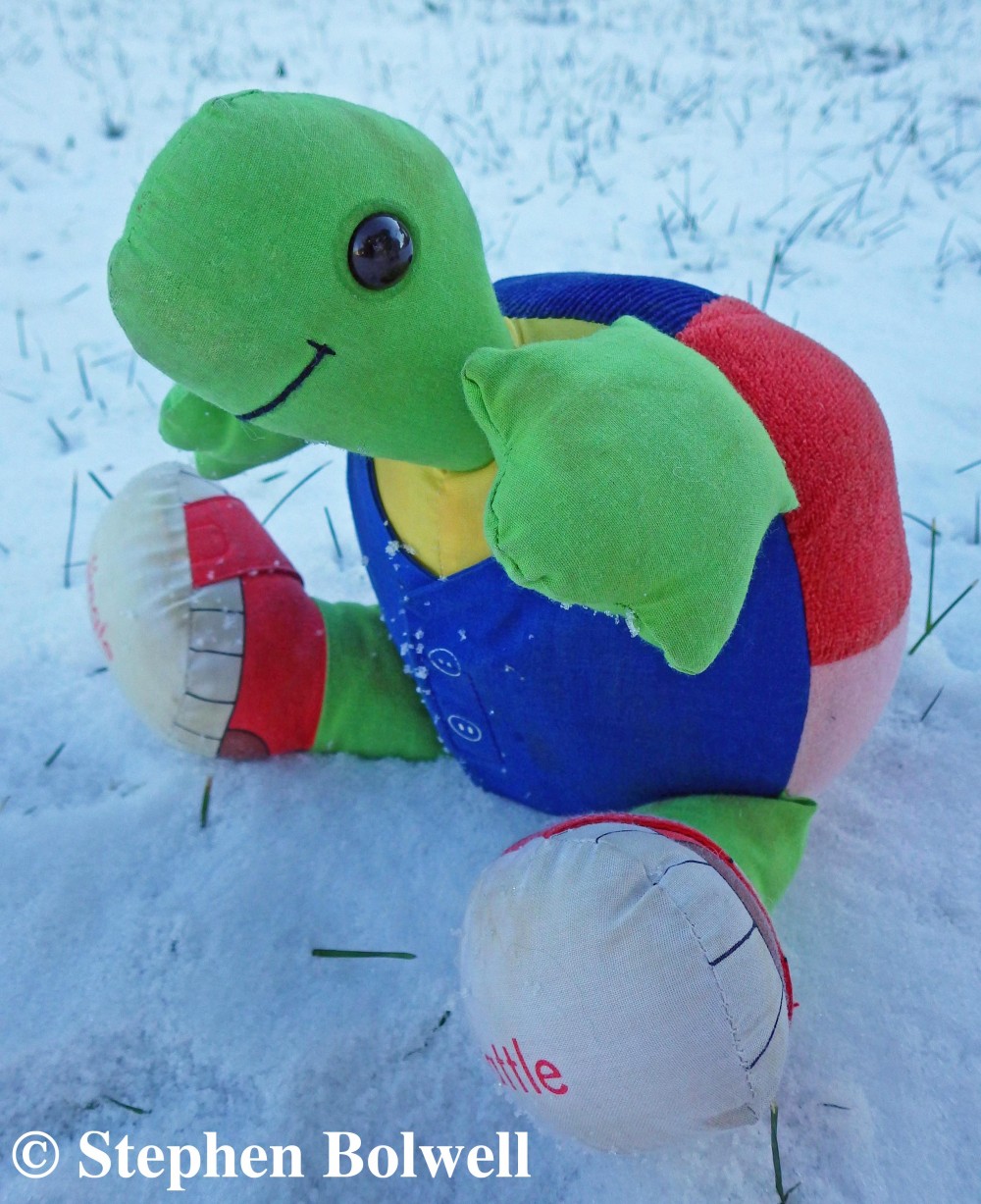
Seldom has so much research gone into a group of animals with so little return, although a great deal has been discovered in recent years. It is now known that temperatures within the nest decide the sex of emerging babies, and it is apparent that during infancy mortality is high – not only are hatchlings vulnerable travelling down the beach to get into the water but they also suffer heavy predation during the early years of life.
There is still much to learn about where young sea turtles go once they are at sea and how they navigate to wherever they need to be. Later in life, mature females will return to lay eggs on beaches, where many years earlier, they also started out. The problems of surviving to maturity seem insurmountable; predation and hits by boats take their toll, many are drowned when caught in fishing nets and all are vulnerable to pollution. It can take half a lifetime for a sea turtle to reach maturity and for those that make it, a life spanning more than a hundred years is a possibility.
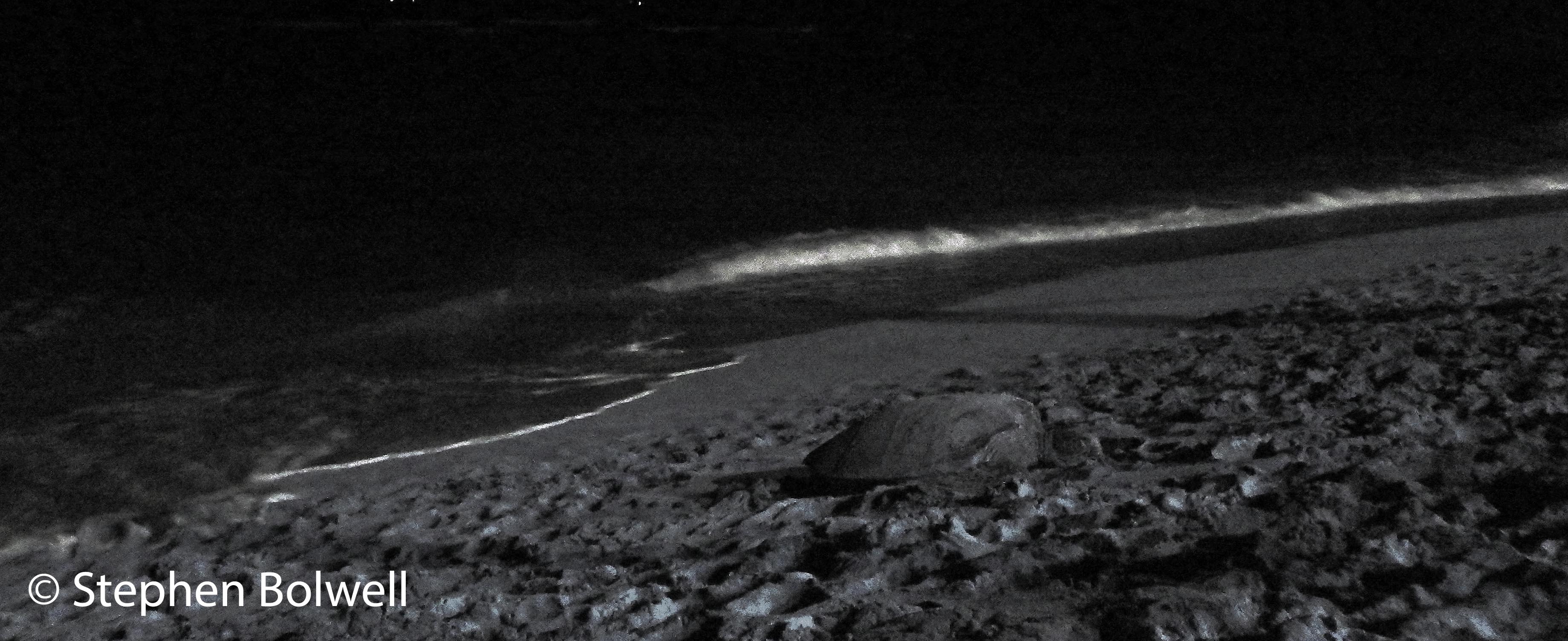
I didn’t attempt to view sea turtles until I was in my 30s and it happened quite by accident… Sadly, this wasn’t a great success. I had gone to Costa Rica to film bats, taking with me a young freeloader who had attached himself to the B.B.C. by claiming special knowledge of the area I was visiting and with the promise of help in return for a ticket to paradise.
In this manner I got stuck with a guy who was clearly out to make a name for himself by journeying to remote places simply to write about them. There was, he said, only one place where we could be guaranteed to see one particular species of bat, which straight away sounded suspicious, coming from somebody who was either too busy catching up on his sleep or not feeling well enough to do anything at all. With limited time available to locate bats I allowed myself to be drawn into his scheme and rented a light aircraft and a pilot to fly us halfway across Costa Rica to a remote location on the Pacific Coast.
It wasn’t long before we were dropping down and bumping along a remote airfield which had been cut into the forest, but during the flight it became clear that my helper had another agenda. He had begun talking excitedly about the beach at the end of the landing strip famous for its ‘arribada’ – a Spanish word that means arrival – in this case the arrival of female Eastern Pacific olive ridleys sea turtles, that were expected just prior to the full moon to lay their eggs’. Ridleys are not large turtles and were once far more common than they are today, but like their close relative the Kemp’s sea turtle, they have a habit of synchronising their visits as a single spectacular event.
A couple of scientists were working the area, otherwise there was nobody else about. Accommodation was limited and the turtles hadn’t so far shown up. I soon got busy searching the local forest for roosting bats and managed to find and film a couple of species without disturbing them, but the bats weren’t unusual and it was down to good fortune rather than any special knowledge provided by my helper who preferred to sleep through the day rather than search out bats.
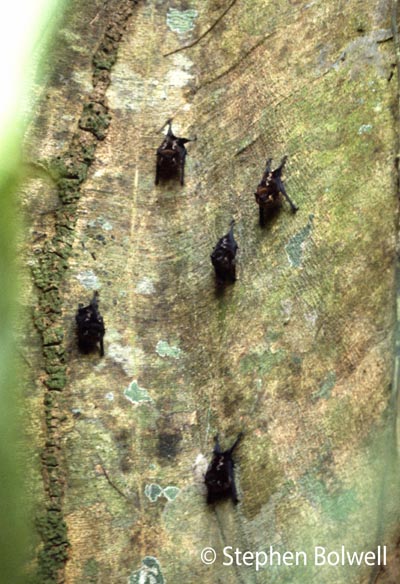
Another night passed without any sign of the turtles and I told my colleague that we would have to fly out the next day because there was filming to be done and time was limited, but he refused to leave, claiming he felt too rough to help move my gear back to the runway. Unfortunately, I had no alternative but to leave him to freeload off of the scientists because as far as I could tell, he had no visible means of support and certainly no way of paying for a flight out, for all I know he might still be there, buried in a shallow grave close by the turtle eggs… but more likely, he has done very well for himself as chances often do.
Sea turtles continued to eluded me for another thirty years until one day a green sea turtle popped its head out of the ocean while I was standing on a beach and I finally got my chance to photograph one in its natural habitat.
In 2010, with my wife and daughter, I encountered green turtles in the surf in Hawaii – quite shockingly they were the size of coffee tables as they washed back and forth in the tidal zone feeding on algae; and they were potentially dangerous if they crashed into you, especially if you were caught standing on the sand rather than floating alongside them in the water.
Quite recently we had left New Zealand where my neighbour had imparted some useful information; he told me that if a sheep runs in your direction you should bend your legs and point them away from the impact, this keeps your knee caps intact because essentially they bend willingly only in one direction. This also worked well with turtles – although dealing with them surging back and forth in the surf wasn’t an everyday event for me, in the absence of sheep the advice was useful.
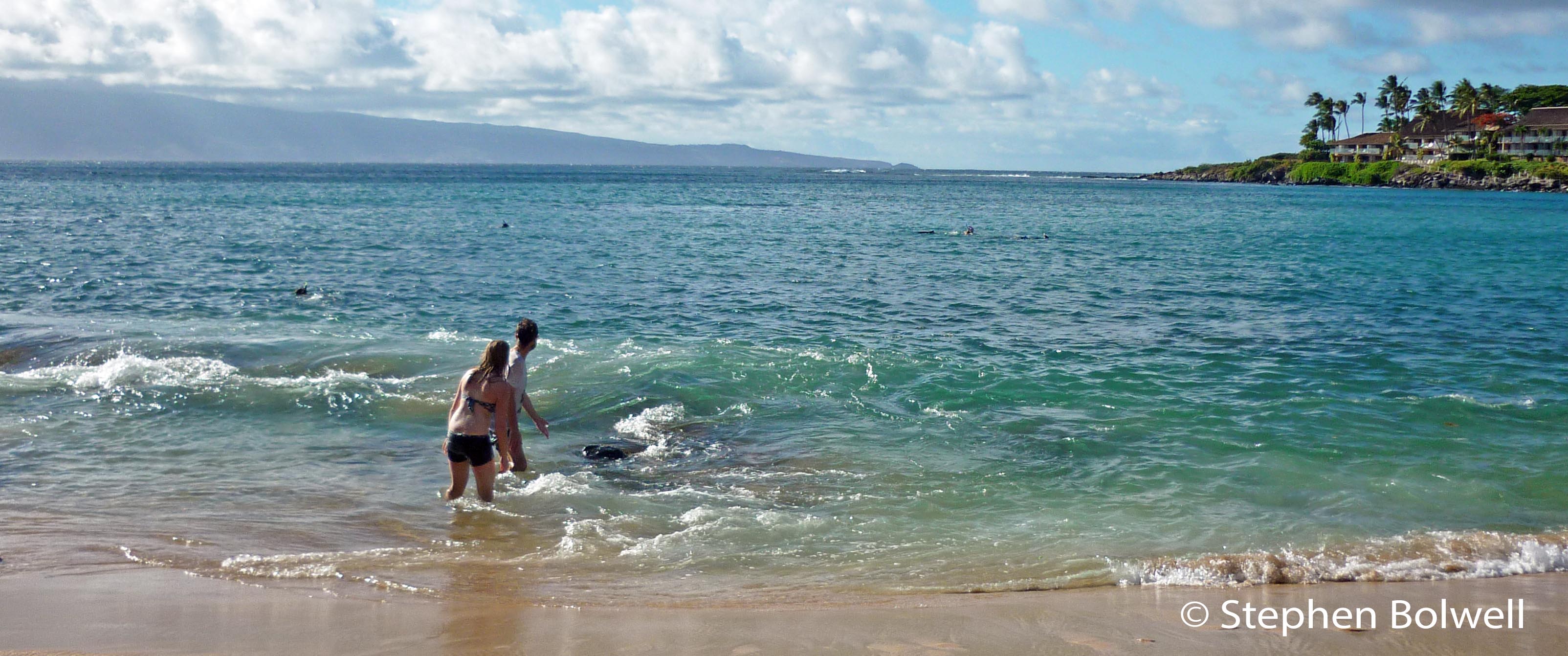
More recently, I was sitting on a Maui beach, whilst my wife and daughter snorkelled in the ocean. When they go into the sea they swim as mermaids might. I on the other hand have no affinity with water and float the way that concrete usually doesn’t. This is always a surprise, because despite having no natural buoyancy, I feel confident in the sea until things begin to go wrong and then it’s a different story. Earlier in the week whilst snorkelling over a coral reef, my mask had filled with water and whilst trying to clear it… I gulped in water. One near drowning experience a week should be enough for anybody and I decided to sit this one out.
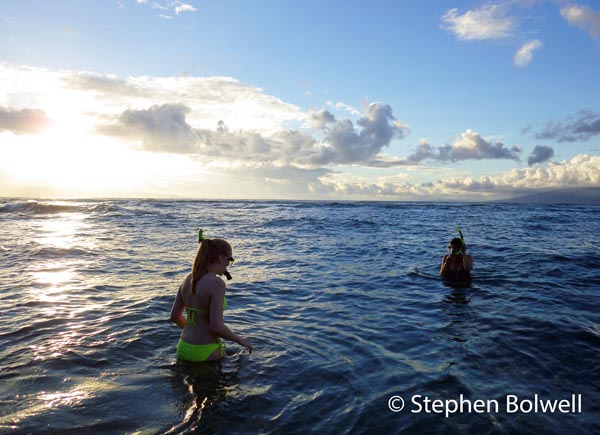
Add to the mix a couple of recent local shark attacks and it wasn’t that difficult to stay out of the water. Understandably, fewer people had been swimming offshore of late. Tourist boards don’t usually advertise shark attacks on their lists of interesting local events, but the snorkel shop had mentioned this tiny detail… and when they advise staying out of the water – you take notice.
In reality, the chances of your surfboard getting bitten in half by a shark, or worse still your leg, are small compared with drowning without a shark in sight, or a motoring accident on the way back from the beach; even getting struck by lightning is easier to achieve than becoming a shark’s lunch, if you hang out in the right place.
All the same my anxiety level shoots up when I think about swimming in low visibility tropical waters as was the case on this day, but it wasn’t the thought of sharks that bothered me, it was the reduced chances of taking a decent photo in the murkiness – otherwise I’d have been out there.
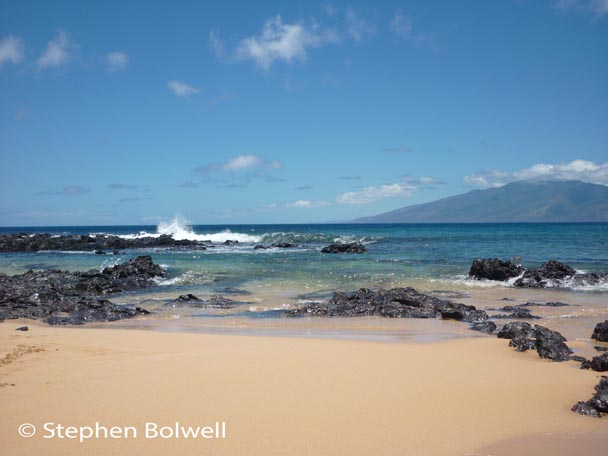
It wasn’t long before I noticed a large walrus of a man sitting close by staring out to sea. Then a teenage boy came running up the beach and called out, ‘There’s a turtle out there you just gotta see. I’ve never seen one that big before.’ But the old man was in no rush, he knew that green sea turtles were grazing algae off rocks in the shallows below us, as occasionally a shell would appear above the water as a turtle was caught by an incoming wave, and now and again a head would pop up for a gulp of air. You might blink and miss it, but turtle watching isn’t like bird watching once in the water: observing turtles grazing is a slow relaxing experience, although in rough surf there is always a chance of a bashing. As I dwelt on this thought the man sauntered down the beach, waded out to his waist and then flopped gently into the water. He wore no flippers and seemed comfortable in the ocean. Around 20 minutes later he was back. ‘She’s a big one alright’, he said, as he flopped down onto his beach towel and I knew then that I had to go and see for myself.
Entering the sea I felt comfortable snorkelling in shallow water and once beyond the point where the waves were breaking, I was still getting dragged back and forth on the swell.
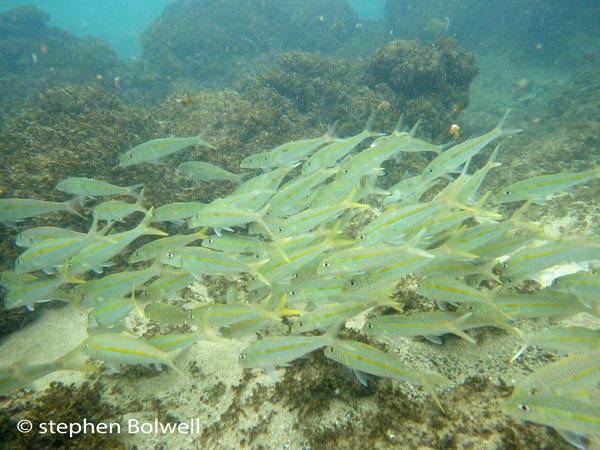
As I got further out it was still possible to stand on rocks with my head above water, but it was better not to, as I would certainly have been bowled over by the waves; it sounds counterintuitive but once amongst rocks it is safer to stay under water to negotiate them. I kept going, with no clear idea now of how far I was from the beach.
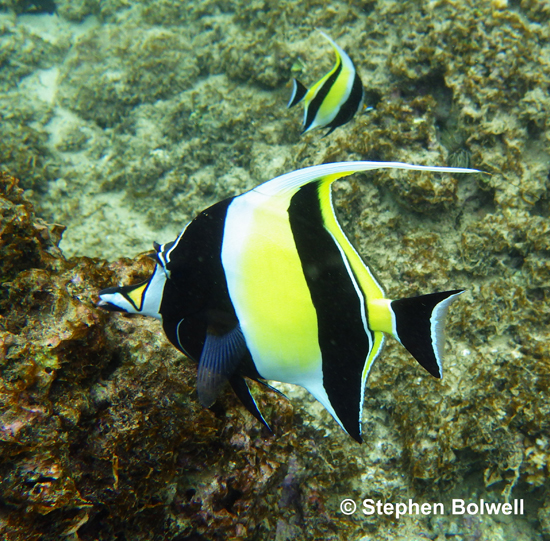
The whole process became hypnotic and I felt relaxed… which was good, but in my case, best not to get lulled into a false sense of security. Then about fifteen feet ahead something big was moving in the water and I was thinking – this is about the right depth to meet up with a shark along the beach line, but thinking ‘shark!’ wasn’t going to be helpful, so I pushed on until the silhouette of a large turtle began to take shape.
What was most surprising was how far the turtle moved back and forth with the wave action, and I watched as this enormous creature swung around the axis of its head in an attempt to keep feeding in the same place; for a moment the weed fanned across the rocks before it was closely cropped by a munch of the turtles ‘beak’ pushing up a puff of detritus that clouded the water. The turtle then moved methodically on to the next growth – some of it already cropped by other turtles.
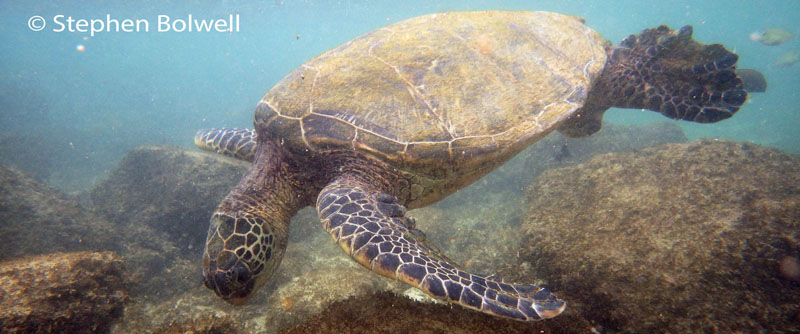
I remained parallel to the turtle for the most part allowing myself to be pulled on the swell whilst remaining at a constant distance, and avoided moving seaward side so that I was not pushed onto the turtle. This is important because touching a turtle in Hawaii is not only illegal but also detrimental to its health. Many green turtles around the Islands suffer from skin lesions which may be caused by pathogens transferred directly from human to a turtle skin. The presence of suntan lotion may also be a factor and so it is best not to apply it when snorkelling.
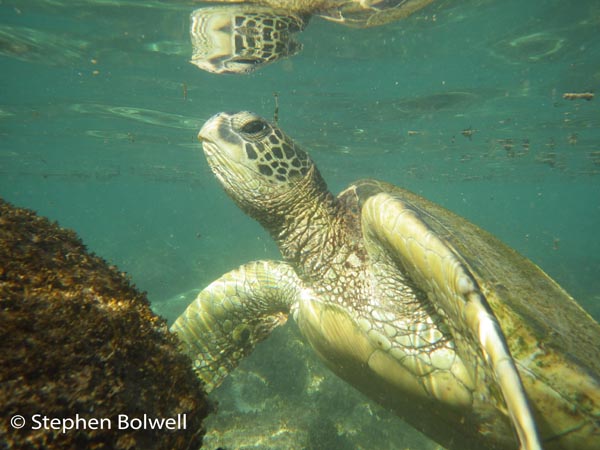
I was so absorbed in the great creature that I didn’t notice until fairly late, something looming to my left. Suddenly there was another turtle… the one I had been watching had moved closer to another, and soon they were almost touching.
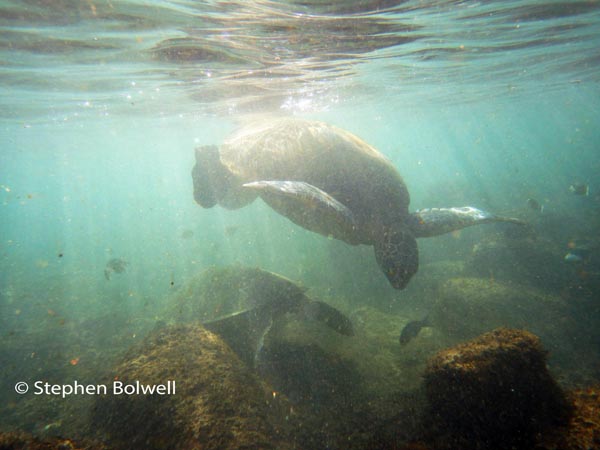
For the most part turtles ignore one another, but for a moment the larger individual used its bulk to push the smaller one from where it had been feeding (see video below). Perhaps this was no more than a coming together of shells – I was too busy avoiding contact with the pair to be certain – for a while I was the filling in a turtle sandwich and the three of us washed backwards and forwards across the reef until I could get clear.
There was a sudden flash of yellow as I was joined by my daughter; we held our positions on either side of the turtle just long enough for this photo.
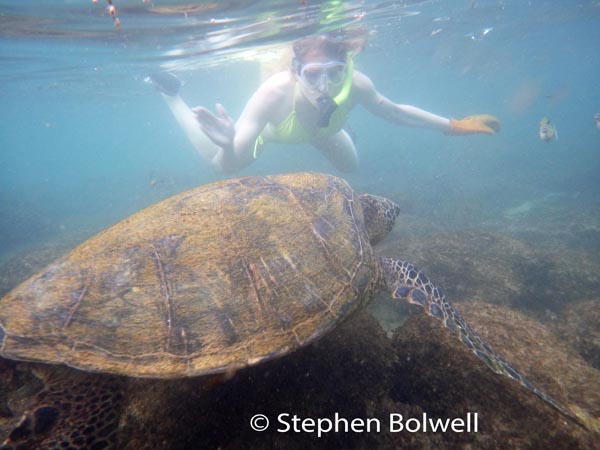
Animals that have eyes on the sides of their heads, as turtles do, are usually herbivores that require a wider range of visibility than we do, essentially to avoid predators and it is likely they process visual information slightly differently from us. Our frontally positioned eyes prioritise depth perception which is usually a feature of predatory animals. Hanging around on either side of a turtle gives it two visual images to process which for a turtle might indicate double the trouble. Because reptiles are expressionless and have limited use of body language it is often difficult to assess when they are being disturbed until they move away. For this reason, if another snorkeler shows up, I usually move away as the new arrival will sometimes get excited by the encounter and move about too much when the appropriate mode is to just be another turtle. Alice and I keep our joint encounter brief and soon return to the beach.
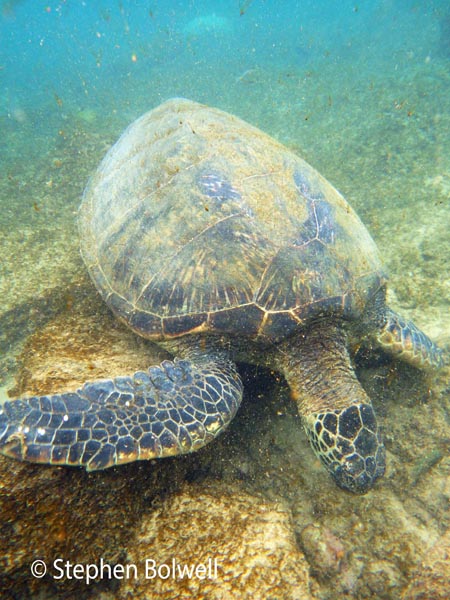
Green sea turtles are not especially bothered about being observed in areas where they are free from persecution, but any observation should be short in duration and not too close. Being at one with nature can be a selfish activity, and it is important to know when to move on.
Turtles have clear markings and scale shapes that aid in their identification even when individuals are observed years apart. A picture will requires other essential data if it is to be useful – when and where the picture was taken with a brief description of the conditions. If reliable pictures could be co-ordinated in the future they might provide a better understanding of turtle movements, their lifestyles and even population numbers.
Turtles are declining so rapidly, almost any information that can be gleaned might one day prove useful, but only if it can be achieved without disturbance. On the plus side it is encouraging to think that taking a picture might hold more than simply aesthetic value and might in some small way be a future aid to conservation.
A short video on Pacific green turtles grazing algae in a tidal zone.
N.B. Do not swim close to rocks in rough surf, snorkel with a partner and use buoyancy aids when necessary – even good swimmers drown. Please do not touch or follow turtles, never visit in numbers and always maintain a respectful distance in order to allow them to get on with their lives without distraction.
